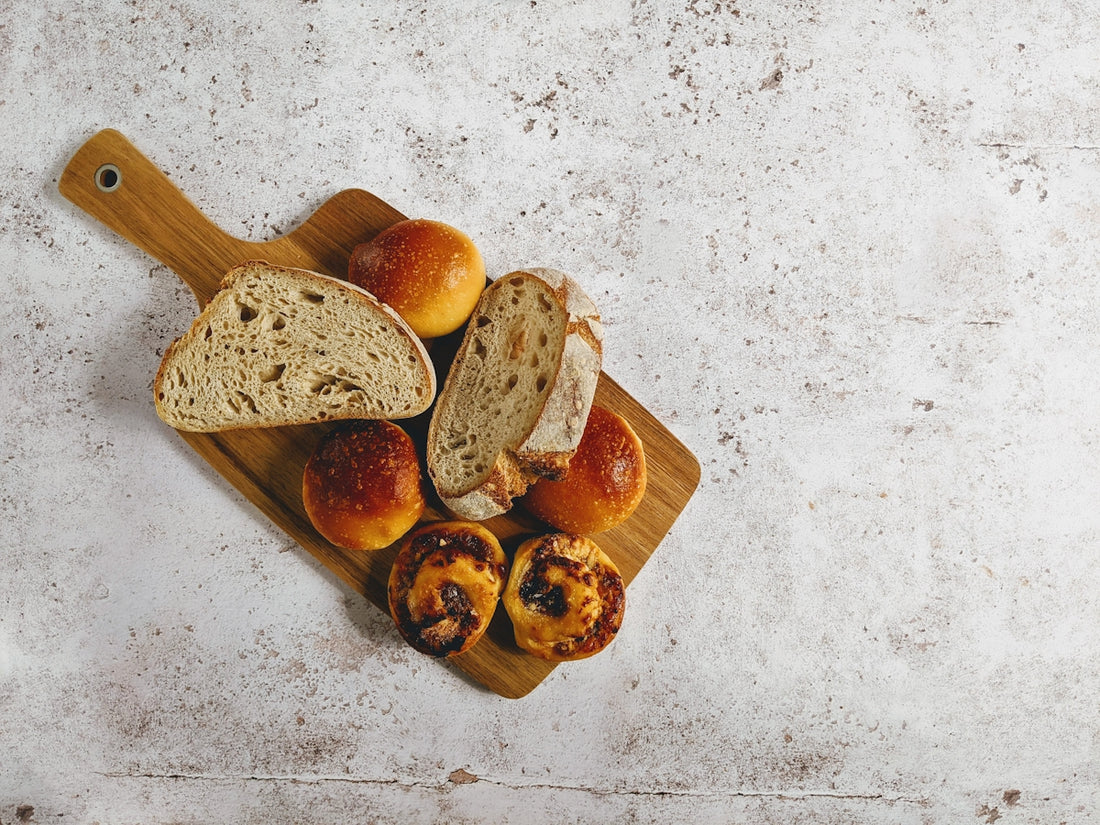
How to Feed and Maintain Your Sourdough Starter: The Ultimate Feeding Schedule
Welcome to the art and science of sourdough! Dive into My Sourdough Life by learning how to care for your sourdough starter with this ultimate feeding schedule. Whether you're a seasoned artisan bread baker or just starting on your sourdough journey, understanding the nuances of sourdough fermentation is key to creating delicious, homemade sourdough bread. Let's explore how to perfect your sourdough practices and maintain a thriving starter.
Why a Sourdough Starter?
A sourdough starter is the magical mix of flour and water that captures wild yeast and lactobacilli bacteria from the environment. This culture of microorganisms gives sourdough bread its distinctive tangy flavor and airy texture. Unlike commercial yeast, the fermentation process of sourdough can provide a more complex taste and may even offer health benefits such as lower glycemic index levels, making it a better option for some diabetics. Curious about sourdough starter vs. yeast? The main difference lies in the time and flavor complexity brought about by wild yeast fermentation.
Creating Your Sourdough Starter
Before you can start baking perfect sourdough bread, you need a robust starter. To create your starter from scratch, mix equal parts of flour and water in a non-metallic bowl. Cover the bowl loosely with a cloth and let it sit at room temperature. Every day, "feed" your starter with more flour and water. This encourages the growth of yeast and bacteria essential for sourdough fermentation.
Sourdough Starter Feeding Schedule
Monitoring and feeding your starter regularly is crucial to maintaining its health. Here's a routine to consider:
Day 1-3: The Beginning
- Mix 50g whole wheat or rye flour with 50g water.
- Let it sit at room temperature for 24 hours.
- Stir as necessary.
Day 4-7: Establishing Your Culture
- Discard half of the mixture and feed 50g of all-purpose flour with 50g water daily.
- Continue at room temperature. Your starter should start bubbling.
Post Day 7: Feeding and Maintenance
Once your starter is active, maintain it with this sourdough starter feeding schedule:
- Daily Feeding (If Baking Daily): 50g flour and 50g water each day.
- Weekly Feeding (For Occasional Bakers): Keep it in the fridge and feed once a week. Allow it to sit at room temperature for a few hours before use.
Looking for tools to aid your baking? Consider using a Bread Lame to perfect your scoring technique.
How to Store Sourdough Starter
Depending on how often you bake, you may store your starter at room temperature or refrigerate it. Room temperature storage is suitable for frequent bakers, while refrigeration works best for those baking once a week or less. If stored in the fridge, always feed your starter at least once a week.
Sourdough Baking Tips
- Temperature and Timing: Both play a crucial role. Keep a consistent routine for best results.
- Moisture: Maintain the right hydration level by using a non-metallic bowl and covering it with a damp cloth.
- Scoring: Practice different techniques with a Bread Lame to improve the crust.
How to Bake Sourdough Bread
Ready to bake using your starter? Follow this basic sourdough bread recipe:
- Prepare the Dough: Mix your active starter with water, then add flour and salt.
- Knead the Dough: Use your hands to fold until it's strong yet elastic.
- First Rise: Let it ferment until doubled, usually about 4-5 hours.
- Shape and Score: Shape your loaves and score them for aesthetic and functional purposes.
- Bake: Use a Le Creuset Dutch Oven or similar tool for a crispy crust.
Sourdough Troubleshooting
- Lack of Rise: Ensure your starter is active. The float test can confirm its readiness.
- Overly Sour: Reduce fermentation time or balance your feedings.
Beyond Bread: Sourdough Bagels and Pizza
Expand your sourdough skills by trying sourdough bagels or sourdough pizza dough. Both utilize the unique fermentation benefits, providing a healthier, flavorful twist to your past recipes.
Conclusion
Maintaining a sourdough starter may seem daunting, but by adhering to a thoughtful sourdough feeding and maintenance schedule, you'll ensure a healthy culture ready to use at a moment's notice. From crispy crusts to enhanced flavors, the benefits of sourdough fermentation are immense.
For those ready to start baking, transform your experience with sourdough starter care into a lifelong passion. Visit Italian Sourdough to explore more about artisan and Italian sourdough bread techniques. Enhance your sourdough experience today and see why some bakers trust starters with a long legacy.
Remember, keeping up with the maintenance and feeding schedule is essential, and investing in quality tools can make a significant difference. Whether it's a durable dutch oven or a refined scoring blade, your sourdough tools are investments in your baking journey. Let's make every sourdough loaf memorable!
